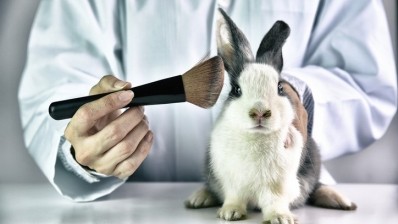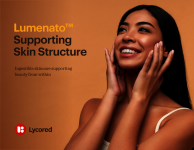China policy: Regulator publishes two more drafts detailing safety assessment and classification for cosmetic products

The Technical Guidelines for Cosmetic Safety Assessment and Cosmetic Classification Rules and Catalog drafts were published on July 29.
These drafts follow the June 29 release of the final version of CSAR, which will take effect on January 1, 2021. Both drafts will be open for public consultation until August 30, 2020
Safety first
The Technical Guidelines for Cosmetic Safety Assessment draft guidelines provides a full and complete technical standard on safety assessment in China.
The draft clarifies standards such as the basic principles, requirements, safety assessors’ requirements, risk assessment procedures as well as toxicology research.
The aim is to scientifically and systematically standardise and safety assessment to ensure the safety of cosmetics consumption and ensure risk management is at a reasonable and controllable level.
Hedy He, an analyst with regulatory consultancy Chemlinked explained to CosmeticsDesign-Asia that purpose of this draft was to raise the bar of safety for cosmetics.
“Safety assessment in China is not as mature as other developed countries. China has issued a draft Guideline and Group Standard for safety assessment respectively in 2015 and 2018, but neither of them has been implemented. So currently there is no effective systemic and comprehensive guidance for safety assessment practical implementation in China.”
April Guo, general manager, personal and home care division of consultancy CIRS, considered this draft to be significant for the cosmetics industry.
“This draft regulation is very important and will have a big change compared with the current requirements. It will give a challenge for the whole industries especially for the local cosmetics companies.”
Guo believes the requirements will be beneficial for companies already familiar with European Union (EU) regulations.
“The safety assessment requirements are becoming stricter compared with the current requirements. It will present a big challenge for the cosmetics registrant or filers, especially for local cosmetics companies. Given these requirements are similar to EU cosmetics regulations, this change will be beneficial or easier for EU cosmetics companies.”
Guo added that if this draft is adopted, the new requirements will facilitate China’s move away from cosmetic animal testing.
“The draft indicates that toxicological tests should be performed if the report conclusion of the safety evaluation is not enough to exclude products that pose risks to human health. This implies it’s possible to waive animal testing once adopting safety assessment under new requirements.”
New classification system
The second draft, Cosmetic Classification Rules and Catalog, proposes a revision of the classification of cosmetics into five dimensions with the adoption of a coding system in China.
The five dimensions of classification are efficacy claims, application areas, dosage forms, target users and application methods.
Products with efficacies, application areas, dosage forms and target users not in the scope specified in this draft will all be regulated as special cosmetics.
“The new regulatory framework will begin to focus on the efficacy evaluation to ensure the effectiveness of cosmetics,” said He.
“The new draft clarifies the 28 efficacies and requires the manufacturer to take full responsibility for any efficacy claims. Relevant literature, adequate research data, or testing reports are required to be made available to the public via the NMPA website.”
He noted that these regulations are aimed at brands that do not have data to back their efficacy claims, an issue that has been prevalent with social media marketing.
“Under the new regulation, companies shall be more cautious about using cosmetic efficacy claims. If no solid evidence supports the claim, they will be sanctioned for false advertising and face severe administrative penalties.”
Guo added that these rules would make it easier for the authorities to crackdown on brands that flout the rules.
“Under this new classification rules and classification catalogue, it will be easy for the government to check if the efficacy claim of sale products is consistent with the one registered or filed.”
She added that if implemented, this would give China the “strictest classification rules of cosmetics in the world”.
What’s next?
According to He, the industry can expect the Chinese authorities to successively release several more supporting documents, such as regulations on labelling and claims evaluations by the end of this year.
“The CSAR will be officially implemented on January 1 next year. In less than half a year, China will successively release several supporting documents. This speed and pace are unprecedented, and China's cosmetics regulatory system will be completely updated.”










![Able C&C has furthered its partnership with Japanese discount chain Daiso with new makeup launch. [A'pieu]](/var/wrbm_gb_food_pharma/storage/images/_aliases/wrbm_tiny/publications/cosmetics/cosmeticsdesign-asia.com/headlines/brand-innovation/a-pieu-and-daiso-launch-exclusive-2-makeup-line/17339117-1-eng-GB/A-pieu-and-Daiso-launch-exclusive-2-makeup-line.jpg)
![Down Under Enterprises is setting sights on the Asian market as environmental sustainability and traceability become increasingly important. [Getty Images]](/var/wrbm_gb_food_pharma/storage/images/_aliases/wrbm_tiny/publications/cosmetics/cosmeticsdesign-asia.com/headlines/market-trends/down-under-enterprises-shifts-focus-to-china-as-environmental-sustainability-traceability-come-into-the-spotlight/17304932-1-eng-GB/Down-Under-Enterprises-shifts-focus-to-China-as-environmental-sustainability-traceability-come-into-the-spotlight.jpg)
![News updates from Shiseido, Dr.Ci:Labo, Sephora, and more. [Shiseido]](/var/wrbm_gb_food_pharma/storage/images/_aliases/wrbm_tiny/publications/cosmetics/cosmeticsdesign-asia.com/headlines/brand-innovation/updates-from-shiseido-dr.ci-labo-sephora-and-more/17334944-1-eng-GB/Updates-from-Shiseido-Dr.Ci-Labo-Sephora-and-more.jpg)

![Clariant has underscored the importance of localisation strategies and distribution capabilities in China with beauty trends evolving at a rapid pace. [Getty Images]](/var/wrbm_gb_food_pharma/storage/images/_aliases/wrbm_tiny/publications/cosmetics/cosmeticsdesign-asia.com/article/2024/04/16/clariant-emphasises-importance-of-localisation-in-the-era-of-viral-trends/17327969-1-eng-GB/Clariant-emphasises-importance-of-localisation-in-the-era-of-viral-trends.jpg)

![We dive into our most-read stories on formulation and science. [Getty Images]](/var/wrbm_gb_food_pharma/storage/images/_aliases/wrbm_tiny/publications/cosmetics/cosmeticsdesign-asia.com/headlines/formulation-science/skin-science-latest-stories-on-cosmetics-science-and-formulation/17334719-1-eng-GB/Skin-science-Latest-stories-on-cosmetics-science-and-formulation.jpg)


